The US HVAC System Market Forecast to Hit $32B by 2029: Key Drivers and Trends
The US HVAC system market is poised for significant growth, with forecasts suggesting it will reach $32 billion by 2029. Understanding the key drivers and emerging trends behind this growth is essential for industry stakeholders, consumers, and investors alike. This article explores the factors contributing to this anticipated market expansion, helping you to stay well-informed.
Key Drivers Behind Market Growth
Several dynamics are fueling the growth of the HVAC system market in the United States. Here are the primary contributors:
- Increased Construction Activities: A surge in both residential and commercial construction projects is a considerable driver. As more buildings are erected, the demand for efficient heating, ventilation, and air conditioning becomes imperative.
- Technological Advancements: Innovations like smart thermostats, energy-efficient units, and IoT-enabled HVAC systems are driving demand. Consumers are increasingly interested in systems that improve energy efficiency and reduce operating costs.
- Environmental Regulations: Stricter energy efficiency regulations at federal and state levels are pushing manufacturers to deliver more eco-friendly HVAC solutions. This shift benefits the market’s overall growth by encouraging sustainable practices.
- Climate Change and Weather Variability: The increasing effects of climate change demand improved HVAC systems to manage extreme temperatures. As the weather patterns become erratic, home and business owners prioritize reliable and efficient HVAC solutions.
Trends to Keep an Eye On
As the HVAC market evolves, several key trends are shaping its future:
- Energy Efficiency: Consumers are increasingly seeking energy-efficient HVAC systems. These systems not only reduce energy costs but also minimize environmental impact.
- Smart Home Integration: There’s a growing trend of integrating HVAC systems into smart home ecosystems. Homeowners want control over their systems through smartphones and voice commands.
- Demand for Indoor Air Quality: The pandemic has heightened awareness regarding indoor air quality. As a result, HVAC systems equipped with advanced filtration systems are gaining popularity.
- Growth of Heat Pumps: The demand for heat pumps, particularly in colder regions, is increasing. These systems provide year-round climate control with lower energy consumption.
Market Segmentation Insights
The HVAC market can be segmented in several ways, providing valuable insights:
| Segment | Projected Market Share % (by 2029) |
|---|---|
| Residential HVAC Systems | 40% |
| Commercial HVAC Systems | 35% |
| Industrial HVAC Systems | 25% |
This segmentation highlights the importance of residential and commercial markets, underscoring their significant contributions to overall growth. Focus on innovations and customer needs in each segment will be crucial for market players.
Future Outlook
The US HVAC system market is set for a transformation fueled by technological innovations and consumer demand for energy efficiency. Looking ahead, manufacturers and service providers must adapt to industry trends to maximize growth opportunities. You can explore more about the market forecast and trends through resources such as PR Newswire and Research Nester.
By being informed about these critical drivers and trends, you can make better decisions, whether you’re an industry professional or a homeowner looking to upgrade your HVAC system. Staying ahead in this ever-evolving market is key to leveraging its potential growth.
Technological Innovations Shaping the Future of HVAC Systems
The HVAC industry is transforming rapidly due to technological innovations that impact efficiency, sustainability, and user experience. As concerns about climate change and energy consumption grow, many manufacturers are investing in advanced technologies to modernize HVAC systems. Here are some key trends shaping the future of HVAC systems.
Smart Thermostats
Smart thermostats are at the forefront of HVAC technology advancements. These devices learn your heating and cooling preferences, adapting to your behavior over time. Users can control them remotely via mobile apps, allowing for efficient energy use even when you’re not home. Additionally, they can optimize settings based on weather patterns. Popular examples include Nest and Ecobee, offering continuous updates and user-friendly interfaces.
Energy-Efficient Systems
Energy efficiency is a crucial focus in the HVAC market. Innovations such as variable refrigerant flow (VRF) systems allow for precise heating and cooling tailored to specific spaces. These systems can save significantly on energy costs by using only the energy necessary for the desired temperature.
Benefits of Energy-Efficient HVAC Systems
- Lower utility bills
- Decreased carbon footprint
- Extended lifespan of the equipment
- Improved indoor air quality
IoT Integration
The Internet of Things (IoT) is revolutionizing HVAC systems by enabling devices to communicate and share data. This connectivity allows for real-time monitoring and remote diagnostics, helping to identify issues before they escalate. For instance, companies like Trane and Lennox are developing IoT-enabled products that enhance maintenance scheduling and overall efficiency.
Air Quality Monitoring
Indoor air quality (IAQ) is increasingly recognized as vital for health and comfort. New HVAC systems are equipped with sensors that monitor pollutants, humidity, and temperature levels. By maintaining optimal IAQ, these systems not only enhance comfort but also contribute to the well-being of occupants. Features like HEPA filters and UV light purifiers are being integrated into many residential and commercial systems. You can learn more about air quality improvements on EPA’s website.
Geothermal HVAC Systems
Geothermal systems use the earth’s consistent underground temperature to heat and cool buildings. They are one of the most energy-efficient HVAC solutions available today. By tapping into renewable energy from the earth, these systems reduce reliance on fossil fuels and provide significant long-term savings on energy costs. With advancements in drilling and installation technology, geothermal systems are becoming more accessible to a broader market.
Advanced Refrigerants
As our understanding of environmental impacts grows, so does the need for alternative refrigerants. Traditional refrigerants like R-22 are being phased out because of their harmful effects on the ozone layer. In response, manufacturers are exploring new options like R-410A, R-32, and natural refrigerants that are less damaging to the environment. These alternatives not only reduce the carbon footprint of HVAC operations but also meet new regulatory requirements.
Automation and Artificial Intelligence
Automation powered by artificial intelligence (AI) is enhancing HVAC controls, making them more intuitive and responsive. AI algorithms analyze data from smart sensors to optimize performance dynamically. This automation can lead to energy savings of up to 30% over time. AI also enhances predictive maintenance, reducing downtime and repair costs.
With these innovations, the future of HVAC systems looks promising. As the market evolves, the primary goal is to create systems that are not only efficient but also user-friendly and sustainable. Manufacturers are quickly adopting these technologies to meet growing consumer demand for energy-efficient and environmentally responsible options.
| Innovation | Description | Benefits |
|---|---|---|
| Smart Thermostats | Remote control, learns user behavior | Energy savings, convenience |
| Energy-Efficient Systems | VRF systems offering precise climate control | Lower bills, reduced footprint |
| IoT Integration | Real-time monitoring and diagnostics | Proactive issue handling, saving time |
| Geothermal Systems | Uses earth’s temperature | Environmentally friendly, long-term savings |
As you consider upgrading your HVAC system or investing in new technology, keeping abreast of these innovations can not only improve comfort but also save you money and reduce your environmental impact.
The Role of Energy Efficiency in the Growth of the HVAC Market
The HVAC market in the United States is poised for remarkable growth, with forecasts estimating it will reach $32 billion by 2029. This expansion is largely driven by the increasing focus on energy efficiency. As consumers and businesses seek to reduce their energy consumption, the demand for innovative, energy-efficient heating, ventilation, and air conditioning systems continues to rise. Understanding the impact of energy efficiency on the HVAC market is essential for anyone involved in real estate, construction, or energy management.
Energy efficiency is crucial in reducing overall energy consumption and lowering environmentally harmful emissions. The benefits are multi-faceted:
- Cost Savings: Energy-efficient HVAC systems often lead to significantly lower utility bills. By investing in these systems, homeowners and businesses can save money while contributing to environmental sustainability.
- Increased Comfort: Advanced HVAC systems provide improved indoor air quality and consistent temperatures, enhancing the comfort of the occupants.
- Government Incentives: Many governments offer tax credits and rebates for installing energy-efficient systems, making them more financially appealing.
The push for energy-efficient technologies is not just a trend; it’s a movement encouraged by regulatory standards. The U.S. Department of Energy (DOE) and the Environmental Protection Agency (EPA) have established strict regulations that require better energy performance. These regulations set a standard for manufacturers and encourage them to innovate. As a result, we see a plethora of energy-efficient models entering the market.
Another key driver is the ever-increasing consumer awareness regarding climate change and energy usage. People are becoming more conscious of their carbon footprints and are choosing HVAC systems that are environmentally friendly. This surge in consumer preference is compelling manufacturers to focus on developing systems that not only comply with energy standards but exceed them.
| Year | Market Value (in Billions) | Growth Rate (%) |
|---|---|---|
| 2023 | $20 | – |
| 2024 | $21 | 5% |
| 2025 | $23 | 9% |
| 2026 | $25 | 8.7% |
| 2027 | $27 | 8% |
| 2028 | $30 | 11.1% |
| 2029 | $32 | 6.7% |
Innovations in technology play an important role in this growth as well. Companies are now integrating smart technology into HVAC systems. These smart systems can adapt to changing conditions and user preferences, optimizing energy use while maintaining comfort. Energy.gov provides further insights on how smart technology can contribute to energy efficiency.
Additionally, as the benefits of energy-efficient HVAC systems become more widely known, commercial sectors are also investing heavily in these technologies. Businesses recognize that improving energy efficiency can enhance their corporate image while simultaneously reducing operational costs. This shift is leading to increased competition among manufacturers, resulting in even more advanced and cost-effective solutions being brought to market.
To meet the future demand, businesses and consumers must also prioritize proper maintenance of HVAC systems. Regular maintenance not only prolongs the lifespan of the units but also ensures they are operating at peak efficiency. Resources from the HVAC.com can guide customers on best practices to maintain the efficiency of their systems.
The landscape of the HVAC market is changing rapidly, driven by the need for energy-efficient systems. Both the residential and commercial sectors are adapting, ensuring they stay ahead in this ever-evolving market. With forecasts indicating substantial growth in the HVAC industry, energy efficiency will undoubtedly remain a cornerstone of this advance. Those invested in construction and energy efficiency should stay informed about these trends to leverage opportunities for sustainable development.
Understanding Consumer Preferences in HVAC System Purchases
When it comes to HVAC system purchases, understanding consumer preferences is critical for both manufacturers and retailers. As the market evolves, insights into what drives consumer decisions can help companies tailor their products and services effectively. In 2023, a detailed examination of these preferences can reveal patterns that influence the anticipated growth of the US HVAC system market, which is on track to hit $32 billion by 2029.
Factors Influencing HVAC System Purchases
Consumers have various factors they consider when selecting HVAC systems for their homes or businesses. Here are some key preferences that frequently emerge:
- Energy Efficiency: With rising energy costs and environmental awareness, consumers prioritize energy-efficient systems. HVAC units with high SEER (Seasonal Energy Efficiency Ratio) ratings tend to be more attractive.
- Brand Reputation: Trusted brands often see higher sales. Consumers rely on reviews and ratings, making a strong online presence vital.
- Cost: While initial purchase price is important, consumers also weigh long-term savings on energy bills. This creates an inclination toward higher-priced but efficient systems.
- Installation and Maintenance: Consumers prefer systems that are easy to install and maintain. Warranties and service plans play a big role in decision-making.
- Smart Features: With the rise of smart homes, consumers increasingly seek HVAC systems equipped with internet connectivity and smart thermostats for better control and convenience.
Shifts in Consumer Preferences
Over the past few years, consumer preferences have significantly shifted in response to technological advancements and changing market dynamics. Understanding these shifts can prepare businesses to cater to evolving consumer demands. Here are a few notable trends:
- Increased Emphasis on Indoor Air Quality: More consumers are becoming aware of the importance of indoor air quality, leading to an increased demand for HVAC systems with advanced air filtration and purification technologies.
- Hybrid Systems: Many consumers are shifting towards hybrid systems that combine traditional HVAC units with renewable energy sources, such as solar power.
- Customization: Personalized options are gaining traction, as homeowners desire HVAC systems tailored to their specific needs and preferences.
Demographic Influences on Preferences
Different demographics exhibit distinct preferences regarding HVAC systems. Understanding these variations can help businesses target their products and marketing strategies accordingly:
| Demographic Group | Preference Highlights |
|---|---|
| Millennials | Prefer smart systems, value eco-friendliness, and typically opt for user-friendly technology. |
| Baby Boomers | Focus on reliability and service reputation, may prefer traditional systems with straightforward operation. |
| Urban Dwellers | Often seek compact, energy-efficient systems for smaller living spaces. |
| Suburban Families | Look for robust systems that offer excellent performance for larger homes. |
Behavioral Insights
Understanding how consumers approach the HVAC buying process can uncover valuable insights for manufacturers. Insights include:
- Research Phase: Most consumers begin their decision-making process online, reading reviews, comparing products, and seeking recommendations.
- Influential Sources: Professional opinions, online reviews, and peer recommendations significantly impact consumer choices.
- Price Sensitivity: While many seek quality, price still plays a large role as consumers strive to balance performance with affordability.
As manufacturers and marketers tap into these consumer preferences, they can enhance their offerings and communication strategies. Engaging with customers through informative content and transparent pricing models can also build trust and loyalty.
To explore more about HVAC systems and get tailored professional recommendations, you can visit [Energy Star](https://www.energystar.gov/) or [U.S. Department of Energy’s HVAC information page](https://www.energy.gov/energysaver/heat-and-cool). These platforms provide essential insights into energy-efficient HVAC systems and best practices for installation and maintenance.
As the US HVAC system market continues to grow, with projections reaching $32 billion by 2029, understanding these preferences and adapting to the changing landscape will be key for stakeholders in the industry.
The Impact of Regulatory Changes on the HVAC Industry
Regulatory changes have a significant influence on the HVAC industry in the United States. As environmental concerns grow and technology evolves, policymakers are implementing new regulations that affect how HVAC systems are designed, manufactured, and installed. Understanding these changes is essential for manufacturers, contractors, and consumers alike. This article explores the effects of regulatory changes on various aspects of the HVAC industry.
Environmental Regulations
One of the biggest drivers of change in the HVAC industry has been environmental regulations aimed at reducing energy consumption and greenhouse gas emissions. The U.S. Environmental Protection Agency (EPA) has set strict guidelines on refrigerants with high global warming potential.
- Phase-Out of HFCs: The Kigali Amendment, a protocol under the Montreal Protocol, sets a timeline for phasing down hydrofluorocarbons (HFCs). These substances are commonly used in air conditioning and refrigeration systems. The transition to less harmful alternatives like hydrocarbon and CO2-based systems will influence product development in the coming years.
- Increased Energy Efficiency Standards: The Department of Energy (DOE) has raised the standards for HVAC efficiency ratings. Equipment must now meet higher Seasonal Energy Efficiency Ratio (SEER) and Energy Efficiency Ratio (EER) ratings. This not only promotes energy savings but also presents challenges to manufacturers in achieving compliance.
Impact on Manufacturing and Design
Regulatory changes require manufacturers to adjust their product lines and designs to meet new standards. This can often lead to increased costs, but it also encourages innovation.
- Research and Development: To comply with new regulations, companies invest in research and development. This has led to smarter, more efficient systems that benefit consumers.
- Integration of Technology: Many HVAC systems now include smart technology, implementing features that enhance energy efficiency. These include programmable thermostats and advanced control systems that respond to weather changes.
Installation and Maintenance Practices
The changes in regulations also affect how HVAC systems are installed and maintained. Contractors must keep abreast of the latest regulations to remain compliant and competitive.
- Training and Certification: Technicians require ongoing training to understand new technologies and compliance measures. Training programs are increasingly focusing on proper handling of refrigerants and energy-efficient installation practices.
- Contractor Responsibilities: Contractors are now more accountable for ensuring that installed systems meet the latest standards. This involves verifying equipment efficiency and refrigerant types during installation.
Consumer Awareness and Market Trends
As regulatory changes shape the market, consumers are becoming more aware of their choices concerning HVAC systems. This awareness results in a shift in market trends.
| Consumer Trends | Impact on HVAC Industry |
|---|---|
| Preference for Energy-Efficient Systems | Increased demand for high-SEER rated systems. |
| Interest in Eco-Friendly Products | Growth in market for refrigerants that are less harmful to the environment. |
| Willingness to Invest | Consumers often prefer upfront costs for long-term savings on energy bills. |
As the HVAC industry continues to adapt to regulatory changes, staying informed is crucial. The ongoing adjustments will result in more energy-efficient, environmentally friendly systems that not only comply with regulations but also meet consumer demands.
The HVAC industry is currently experiencing transformative changes due to evolving regulations. Stakeholders in this field must keep pace with these shifts to thrive in an increasingly competitive market. Staying up to date on industry regulations and innovations is essential for successful operations in the coming years. For more information about regulatory impacts on HVAC, you can check the Caleffi guides, which provide insights into compliance and standards.
Competitive Landscape: Major Players in the US HVAC Market
The U.S. HVAC system market is becoming increasingly competitive as demand continues to rise. With a projected growth forecast to reach $32 billion by 2029, understanding the key players in this industry is essential. These major companies shape the market and influence trends, technology, and customer preferences.
Key Players in the U.S. HVAC Market
Several major companies dominate the U.S. HVAC landscape. Each player offers unique products, services, and innovations that cater to different customer needs. Here’s a closer look at some of the leading companies:
- Carrier Global Corporation: A pioneer in HVAC technology, Carrier is known for its high-efficiency heating and cooling systems. Their innovation in smart HVAC solutions continues to set industry standards. Learn more about Carrier.
- Trane Technologies plc: Trane is committed to sustainability and advanced technology in HVAC systems. Their systems are designed to be energy-efficient, helping to lower carbon footprints. Explore Trane’s offerings.
- Lennox International Inc: Lennox provides a wide range of HVAC products, from traditional systems to modern smart solutions. They focus on delivering performance and energy savings. Find out more about Lennox.
- Rheem Manufacturing Company: This company is known for its comprehensive product lineup, including water heaters and HVAC systems. Rheem emphasizes reliability and efficiency across all its products. Check Rheem’s products.
- Goodman Manufacturing Company: Popular for cost-effective solutions, Goodman provides reliable HVAC equipment accessible to many homeowners. Their focus on value makes them a significant player in the market. Discover Goodman’s services.
Market Dynamics
The dynamics of the U.S. HVAC market are influenced by various factors:
- Technological Advancements: Technology continues to shape the HVAC industry, pushing for more energy-efficient and smart appliances.
- Environmental Regulations: Stricter environmental regulations are pushing companies towards eco-friendly products.
- Consumer Preferences: There’s a growing demand for energy-efficient systems among consumers concerned about climate change.
- Economic Factors: The overall economy plays a role in driving demand for new HVAC systems, especially in residential and commercial sectors.
Trends Shaping the Market
As we look towards the future of the US HVAC system market, several trends are emerging:
- Smart HVAC Technology: Systems that integrate IoT for remote control and monitoring are gaining traction.
- Energy Efficiency: Consumers continue to gravitate towards products that boast high energy efficiency ratings.
- Green Solutions: More manufacturers are focusing on environmentally friendly systems that utilize renewable energy sources.
- Increased Customization: Personalized HVAC solutions catering to specific customer needs are becoming increasingly popular.
Challenges in the HVAC Market
Despite its growth potential, the U.S. HVAC market faces certain challenges:
- Supply Chain Disruptions: Variability in raw material availability can hinder production timelines.
- Regulatory Compliance: Keeping up with evolving regulations can be daunting for manufacturers.
- Labor Shortages: A shortage of skilled labor can impact the installation and maintenance of HVAC systems.
Future Outlook
The HVAC market in the U.S. is set for significant growth. With the demand forecast to hit $32 billion by 2029, companies will need to innovate and adapt to remain competitive. As energy efficiency and smart technology gain importance, companies focusing on these trends are poised for success. Key players will continue to influence the market, shaping how consumers approach their heating, cooling, and ventilation needs.
For those interested in learning more about the HVAC market dynamics, you may refer to resources such as U.S. Department of Energy or Bureau of Labor Statistics for industry insights.
Sustainability Initiatives and Their Influence on HVAC System Development
The demand for more eco-friendly solutions is impacting many industries, and the HVAC system sector is no exception. As the world becomes increasingly aware of environmental issues, manufacturers and consumers are pushing for innovations that promote sustainability. This shift is reshaping heat, ventilation, and air conditioning solutions, ultimately influencing their development and market dynamics.
Several factors drive the focus on sustainability within the HVAC industry:
- Regulatory Pressures: Governments worldwide are implementing stricter regulations regarding energy consumption and greenhouse gas emissions. Compliance with these regulations is vital for manufacturers aiming to stay competitive.
- Consumer Demand: Homeowners and businesses are becoming more informed about their environmental footprints. As a result, they increasingly seek energy-efficient solutions that reduce operational costs and have a lesser impact on the environment.
- Technological Advancements: Cutting-edge technologies such as smart HVAC systems offer better energy management, allowing for enhanced efficiency and reduced waste.
One of the most significant components of sustainable HVAC systems is the integration of renewable energy sources. Solar-powered HVAC systems, for instance, harness solar energy for heating and cooling needs. This technology ensures a drastic reduction in reliance on fossil fuels and lowers operational costs over time.
Energy-efficient certifications also play a critical role in the industry’s evolution. Programs like ENERGY STAR help identify products that meet stringent energy efficiency criteria. By labeling products, these certifications empower consumers to make informed choices, promoting environmentally responsible options.
The HVAC market has also shifted towards enhanced refrigerants with lower global warming potential (GWP). Traditional refrigerants like R-22 and R-410A are being phased out due to their harmful environmental impacts. In their place, HVAC manufacturers are increasingly using refrigerants such as R-32 and hydrofluoroolefins (HFOs), which boast significantly lower GWP, thereby decreasing the overall environmental impact.
To illustrate the growth trajectory of HVAC systems steeped in sustainability, consider the following projections:
| Year | Market Size (in Billion USD) | Growth Rate |
|---|---|---|
| 2023 | 22 | 5% |
| 2025 | 25 | 7% |
| 2027 | 28 | 9% |
| 2029 | 32 | 11% |
The anticipated growth of the HVAC system market to $32 billion by 2029 highlights the critical shift toward sustainable practices as a driving force. Businesses and consumers looking to improve their environmental impact will fuel this rapid expansion.
In line with sustainability, smart building technology is growing increasingly popular. Automated systems that allow for real-time monitoring of HVAC operations can help improve efficiency significantly. By adjusting settings based on occupancy and external weather conditions, businesses can reduce energy consumption while ensuring comfort for building occupants.
Engagement with industry standards and organizations is also essential for manufacturers focusing on sustainability. Entities like the American Society of Heating, Refrigerating and Air-Conditioning Engineers (ASHRAE) set guidelines that encourage innovation and sustainable practices. Collaborating with these organizations can help companies stay ahead by adopting new technologies and practices that align with environmental goals.
The future of HVAC systems is bright and aligned closely with sustainability initiatives. As market dynamics evolve, the push for eco-friendly solutions will drive innovation and reshape the landscape of HVAC development. Adapting to these shifts not only benefits the environment but also leads to cost savings and enhanced energy performance for users.
For more insights into the HVAC industry’s sustainable transformation, you can visit HVAC.com or explore resources at the U.S. Department of Energy.
Key Takeaway:
The US HVAC system market is on a remarkable growth trajectory, projected to reach a substantial $32 billion by 2029. This monumental shift is driven by various key factors and trends that are reshaping the industry landscape. As we delve into the specifics, it is essential to understand the interplay of technological innovations, energy efficiency, consumer preferences, regulatory changes, competition, and sustainability initiatives.
One of the primary drivers of this market growth is the technological advancements in HVAC systems. The integration of smart technologies and Internet of Things (IoT) features is enhancing energy management and system performance, leading to smarter and more efficient climate control solutions. These innovations not only improve comfort but also cater to the increasing consumer demand for more connected home environments.
Energy efficiency remains at the forefront of HVAC market evolution. With rising energy costs and heightened awareness of environmental responsibilities, consumers are prioritizing HVAC systems that offer better efficiency and reduced operating costs. This shift is encouraging manufacturers to produce cutting-edge products that align with energy efficiency standards, such as ENERGY STAR ratings.
Understanding consumer preferences is crucial for HVAC manufacturers. Consumers today are well-informed and seek systems that provide value, transparency, and sustainability. Various features—including noise levels, air quality improvements, and longevity—are now significant considerations for buyers when selecting HVAC systems.
Regulatory changes also play a pivotal role in shaping the HVAC industry. Governments are implementing stricter energy efficiency standards and green building initiatives that impact how HVAC systems are designed and marketed. Staying compliant with these regulations is essential for manufacturers looking to thrive in a competitive environment.
Speaking of competition, the US HVAC market is home to several major players, each vying for a larger market share. Companies are collaborating and innovating to leverage new opportunities in this rapidly changing landscape, enhancing their offerings to meet evolving consumer demands.
Sustainability initiatives are profoundly influencing HVAC system development. As consumers become increasingly aware of their environmental footprint, manufacturers are focusing on more eco-friendly materials and technologies. This movement towards sustainability is not just a trend but a fundamental change that will redefine the HVAC landscape in the years to come.
The US HVAC system market is expected to reach $32 billion by 2029, driven by technological innovations, energy efficiency mandates, evolving consumer preferences, regulatory factors, competitive dynamics, and sustainability initiatives. Keeping an eye on these elements will be crucial for anyone looking to understand or engage with this thriving industry.
Conclusion
As we look ahead to the projected $32 billion valuation of the US HVAC system market by 2029, it’s clear that this growth is driven by several interrelated factors. Technological innovations are revolutionizing the industry, with smart systems and IoT devices enhancing efficiency and user convenience. These advancements are critical as energy efficiency becomes increasingly important to both consumers and regulators, driving demand for sustainable solutions that reduce environmental impact.
Consumer preferences play a significant role in shaping market trends. As customers seek more eco-friendly options and high-performance systems, manufacturers are responding with products that cater to these desires. This shift in focus ensures that companies align their offerings with the evolving expectations of the market.
Regulatory changes further influence the HVAC landscape, pushing for stricter efficiency standards that encourage companies to innovate and adapt. Understanding these regulations allows businesses to stay competitive and compliant while also meeting consumer needs.
Moreover, sustainability initiatives are becoming a key consideration in HVAC system development, providing a framework for industries to reduce their carbon footprints. This collective emphasis on efficiency and environmental stewardship bolsters market growth and encourages healthier buildings.
With major players continually emerging and evolving, the competitive landscape remains dynamic. As the industry adapts to trends, technologies, and consumer behaviors, stakeholders must remain agile and responsive to capitalize on this prosperous market trajectory. The interplay of these elements will define the future of the HVAC sector, ensuring its critical role in building systems throughout the country.
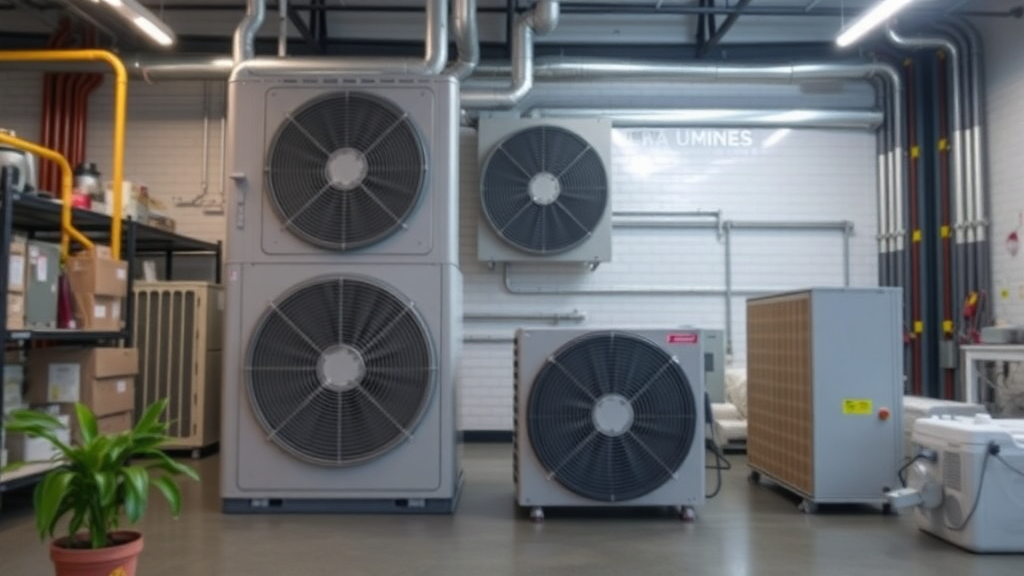
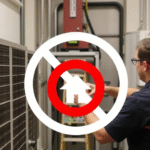
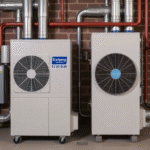
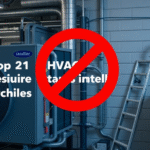

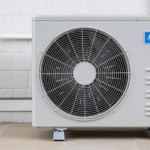
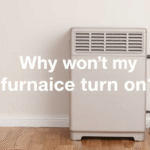
Leave a Reply